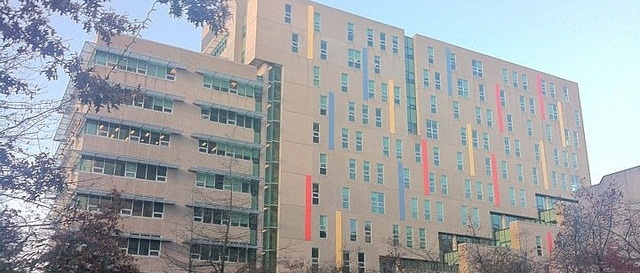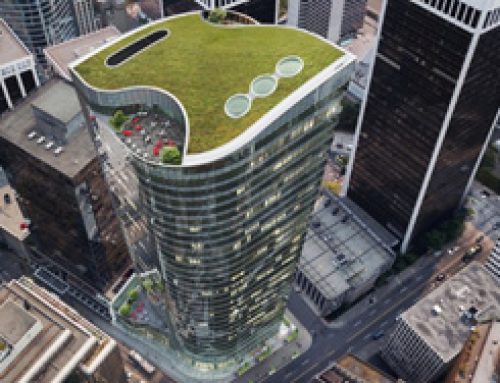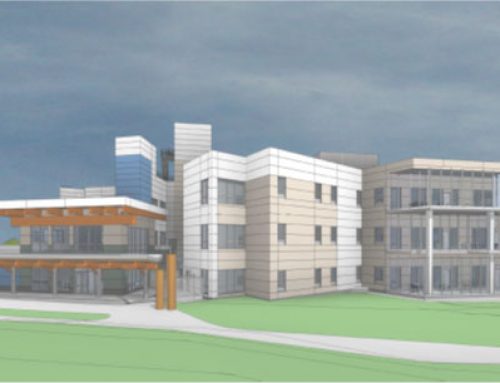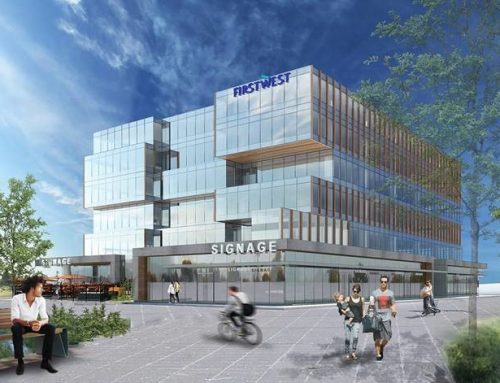PROJECT TEAM:
Owner: Vancouver Coastal Health Authority
Construction Manager: Access Health Vancouver / PCL Constructors Westcoast Inc.
Architect: IBI Group / Henriquez Partners
MECHANICAL DESIGN-BUILD TEAM:
Prime Mechanical Contractor: Fred Welsh Ltd.
Consultant: Quadra Pacific / MMM Group Consultants
Sheet Metal: Apollo Sheet Metal
Controls: Johnson Controls
Fire Protection: Troy Sprinklers
Insulation (Pipe & Duct): Aarc-West Mechanical Insulation
Mechanical Contract Value: $15,500,000
Project Duration: 2 years
Total Man Hours: 160,000
 The VGH Academic Ambulatory Care Centre / Gordon and Leslie Diamond Health Care Centre is an eleven storey ambulatory health care and teaching facility located on the site of Vancouver General Hospital (VGH). Approximate building area is 375,000 square-feet plus five levels / 600 stalls of underground parking.
The VGH Academic Ambulatory Care Centre / Gordon and Leslie Diamond Health Care Centre is an eleven storey ambulatory health care and teaching facility located on the site of Vancouver General Hospital (VGH). Approximate building area is 375,000 square-feet plus five levels / 600 stalls of underground parking.The AACC / GLDHCC facility benefits an estimated 600,000 patients annually and supports several hundred researchers and clinicians and approximately 500 medical and allied professionals.
The Main floor is designed to house a mix of uses, including a Diagnostic Lab, commercial retail spaces and a 250-seat Lecture Theatre.
The second floor accommodates the UBC Faculty of Medicine academic teaching functions with a Biomedical Library, Problem Based Learning Rooms and Clinical Skills Teaching areas
The upper floors contain Clinics, Doctors’ offices, Outpatient Exam and Treatment areas, accommodating more than 35 hospital clinics and programs.
The project was developed under the P3, Public-Private-Partnership model.
Mechanical Systems:
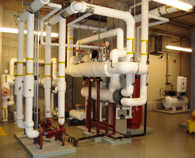 The building mechanical systems are comprised of: Central chilled and heating water systems, variable air volume systems with air handling units using 100% outdoor air, heat recovery systems, radiant heating and cooling panels for the perimeter offices, ground floor heat pump systems, data/electrical rooms cooling systems, steam/condensate systems for heating, humidification and process systems, medical gas systems, domestic water and sanitary systems.
The building mechanical systems are comprised of: Central chilled and heating water systems, variable air volume systems with air handling units using 100% outdoor air, heat recovery systems, radiant heating and cooling panels for the perimeter offices, ground floor heat pump systems, data/electrical rooms cooling systems, steam/condensate systems for heating, humidification and process systems, medical gas systems, domestic water and sanitary systems.
Technical Solutions:
Ground Floor
 A separate, stand alone heat pump system is provided for this floor. This system can operate independently of the main building systems to allow for different operating hours. The cooling systems for the building’s electrical transformer room, electrical rooms and IT rooms are connected to the heat pump system and a substantial amount of heat generated by the equipment in these rooms is captured and re-used to heat the ground floor.
A separate, stand alone heat pump system is provided for this floor. This system can operate independently of the main building systems to allow for different operating hours. The cooling systems for the building’s electrical transformer room, electrical rooms and IT rooms are connected to the heat pump system and a substantial amount of heat generated by the equipment in these rooms is captured and re-used to heat the ground floor.
In the summer, excess heat in the south facing atrium is removed without mechanical cooling by a gravity ventilation system with automatically controlled openings at the high and low levels of the atrium.
Upper Floors Perimeter Offices
 A dedicated 100 % outdoor air system to meet the ventilation requirements with radiant cooling/heating panels to augment the air systems was selected. With the radiant system, cooling/heating is transferred by water, rather than with air, which is substantially more energy efficient.
A dedicated 100 % outdoor air system to meet the ventilation requirements with radiant cooling/heating panels to augment the air systems was selected. With the radiant system, cooling/heating is transferred by water, rather than with air, which is substantially more energy efficient.
Upper Floors Interior Areas
 To meet the cooling and ventilation requirements of the interior areas of the upper floors, two air handling systems using 100 % outdoor air are provided.
To meet the cooling and ventilation requirements of the interior areas of the upper floors, two air handling systems using 100 % outdoor air are provided.
These systems are Variable Air Volume (VAV) and VAV valves are located throughout the upper floors to provide temperature control as required in individual areas.
Central Plant and Heat Recovery
 Water to water heat pumps are used to transfer heat from the exhaust air systems to the supply air systems in the winter. Up to 70% of the energy in the exhaust system can be captured and reused with this type of arrangement.
Water to water heat pumps are used to transfer heat from the exhaust air systems to the supply air systems in the winter. Up to 70% of the energy in the exhaust system can be captured and reused with this type of arrangement. Heat pumps are used to cool the supply air in the summer and the heat removed from the building is rejected through a variable speed cooling tower to the atmosphere.
Heat pumps are used to cool the supply air in the summer and the heat removed from the building is rejected through a variable speed cooling tower to the atmosphere.
A centrifugal chiller is used to generate chilled water to the radiant panels in the summer. In the winter, chilled water for the radiant panels is provided by the cooling tower directly and the centrifugal chiller is not required. Heating and humidification for the building is provided by steam supplied from the VGH central plant.
Energy Savings and Environmental Impact
 Because of the building design, type of systems selected and the application of efficient heat recovery, it is estimated that this building will use 27.3% less energy than a similar building built to the requirements of the Model National Energy Code for Canada. The energy saving will result in a reduction of 708 tons of greenhouse gases per year.
Because of the building design, type of systems selected and the application of efficient heat recovery, it is estimated that this building will use 27.3% less energy than a similar building built to the requirements of the Model National Energy Code for Canada. The energy saving will result in a reduction of 708 tons of greenhouse gases per year.
The use of radiant cooling/heating system reduced the amount of air circulated through the building.
By using lower air volumes, the floor to floor height in the building was reduced as well as the size of the mechanical rooms. This reduction in building area and height reduced the impact of the building on the neighborhood, as well as the overall construction cost.

